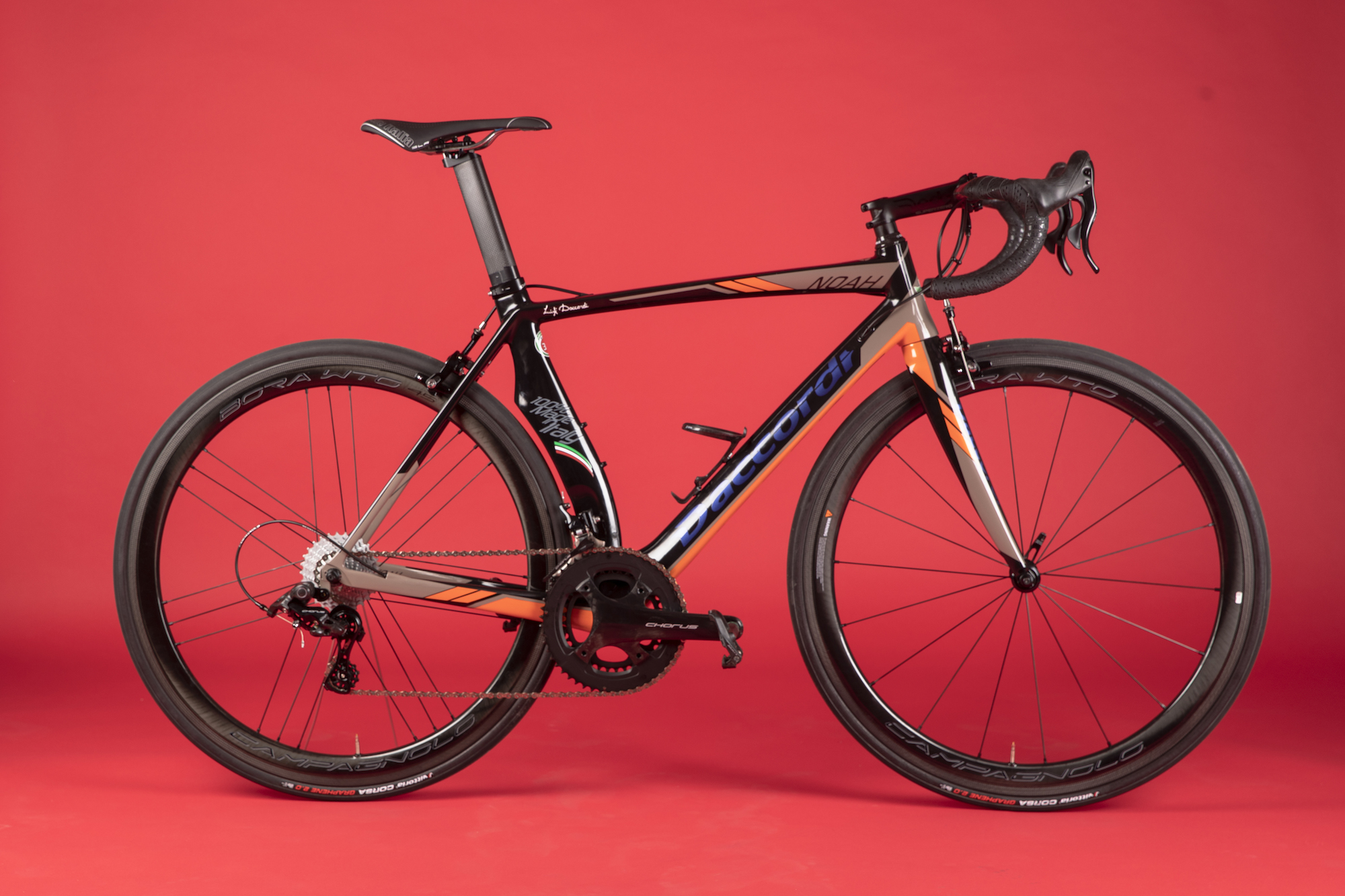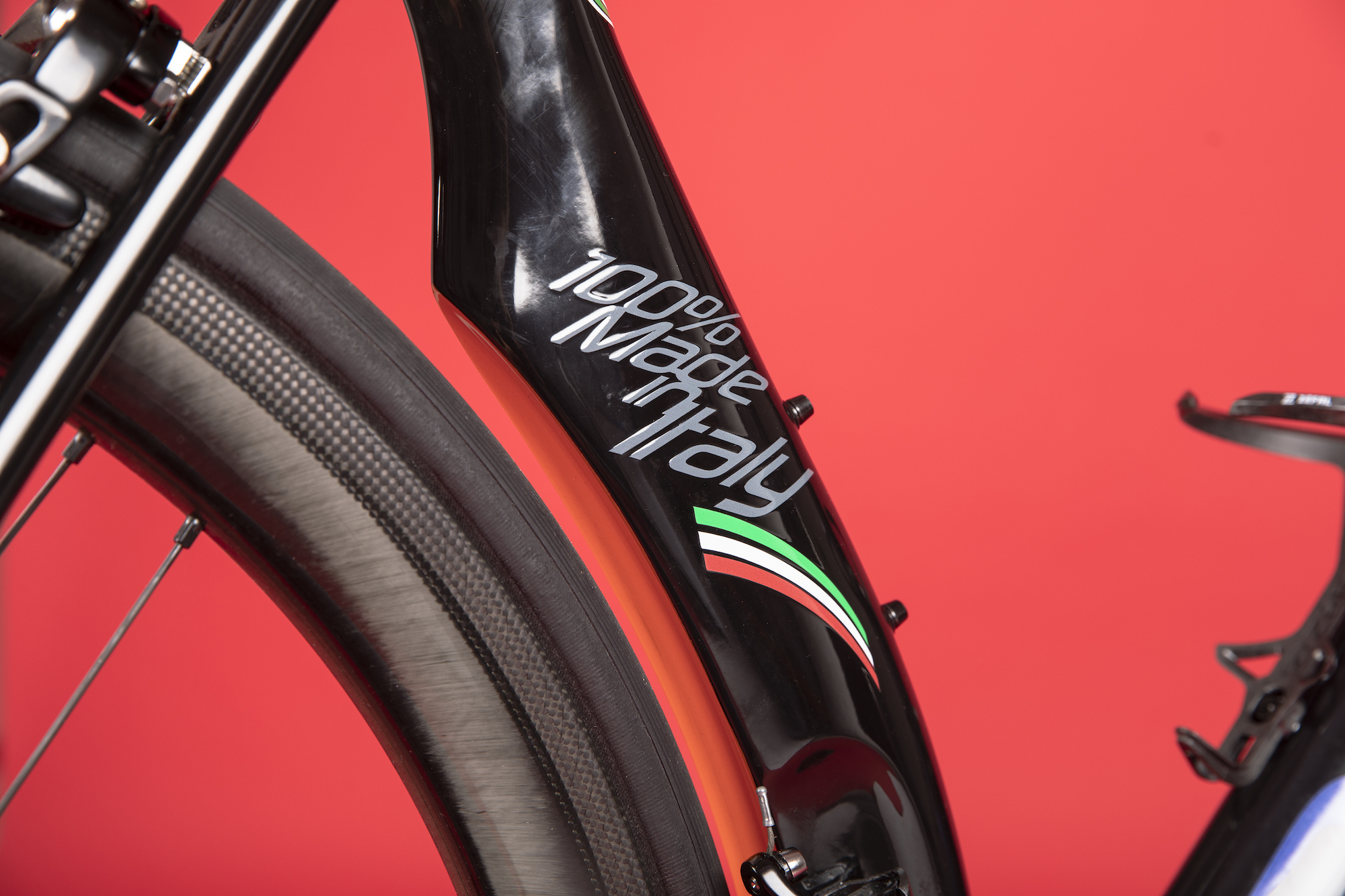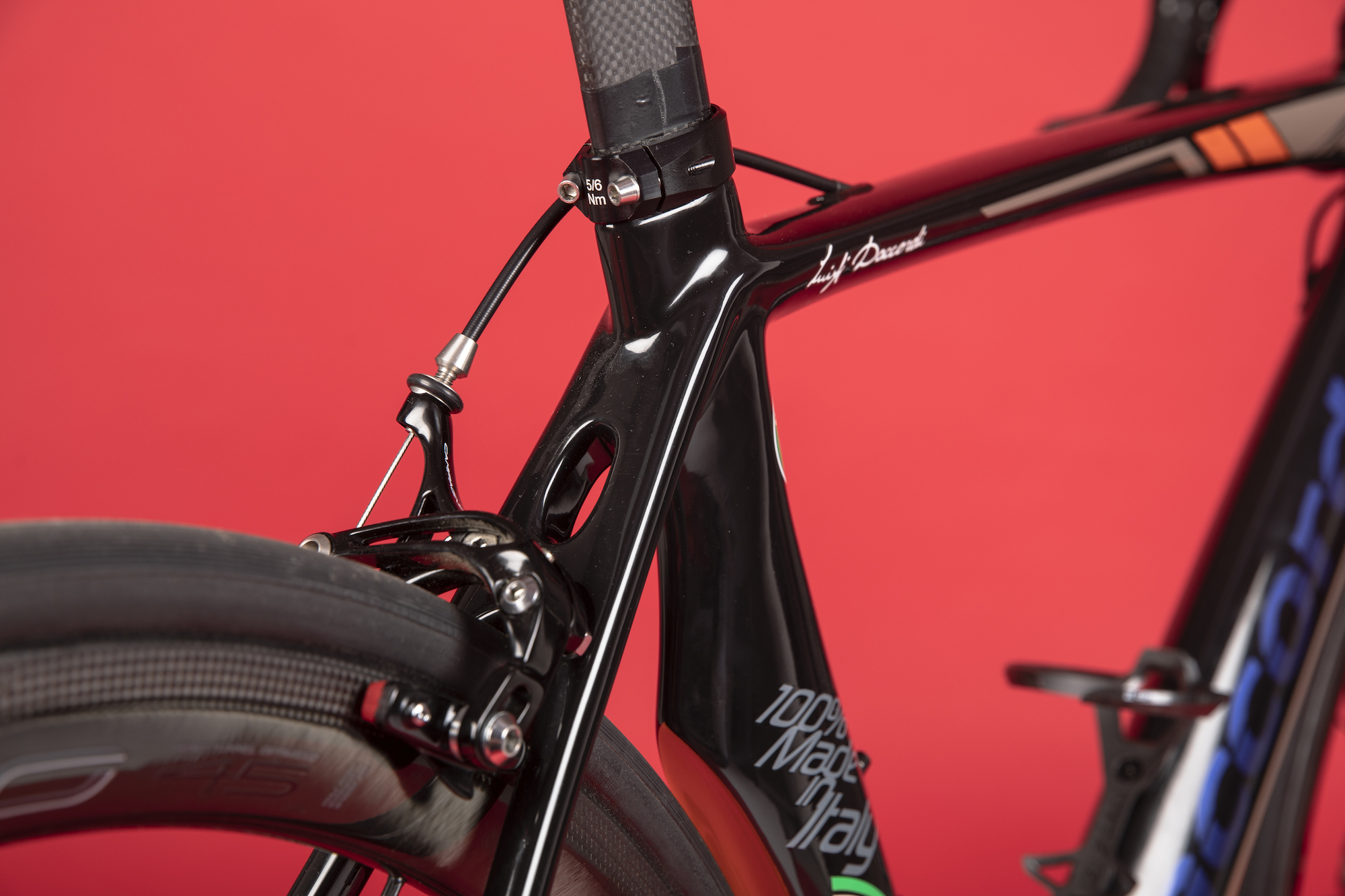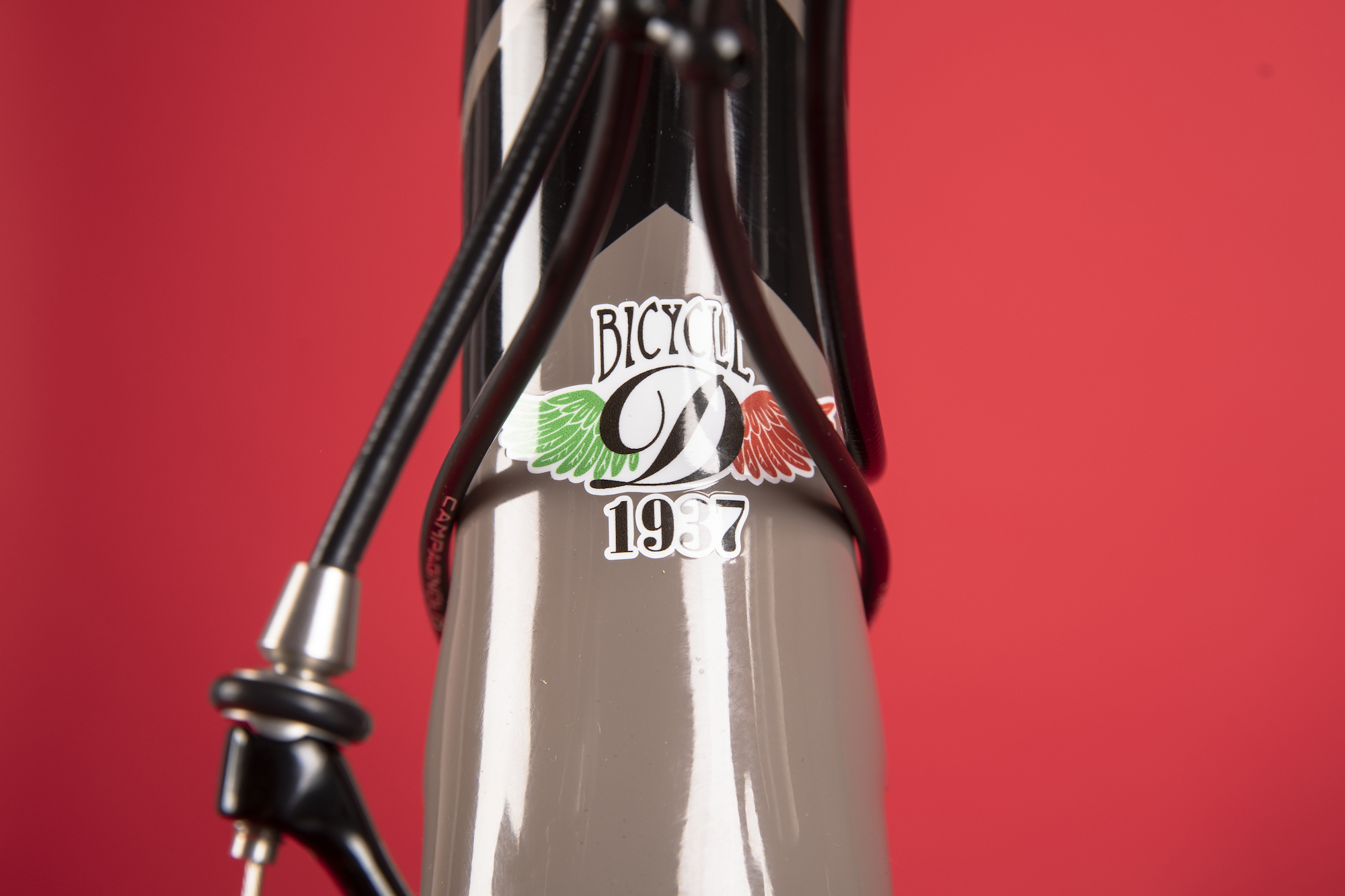Daccordi Noah review
This Daccordi Noah not only has a frame that's handmade in Italy but it’s also adorned with a full Campagnolo Chorus groupset, Bora WTO wheels and rolls on Italian Vittoria Corsa tyres – it's an Italophile's dream bike.

The Daccordi Noah is a rare, exotic superbike that's made to measure in Italy and it rides beautifully. It's one for the connoisseur rather than the wannabe WorldTour pro – the UCI doesn't permit custom frames anyway – and is expensive, but it's something unusual, very special and no one else on your club run will have one.
-
+
Made in Italy
-
+
Bespoke geometry
-
+
Refined ride quality
-
+
Custom paint
-
+
You won't see another one like it
-
-
Campagnolo Chorus groupset not as smooth as the Daccordi frame
-
-
Seatpost clamp is basic
You can trust Cycling Weekly.

Handmade in Tuscany and dripping in Campagnolo, Vittoria, Columbus, Deda and Selle Italia, this Daccordi Noah is as Italian as gondolas, pasta, opera and caffè corretto.
Not many Italian bikes are actually made in the bel paese nowadays, and the majority of formerly iconic Italian brands are no longer even owned by their founding families. But Luigi Daccordi, the son of Giuseppe Daccordi who founded the company in 1937, took a different route: instead of sponsoring racing teams and moving production to the Far East, he invested in renewable energy and sustainable manufacturing processes for his factory in Tuscany and continued making bespoke frames in low volumes for discerning customers, and all Daccordi bikes are made there. Daccordi doesn't have the racing palmarès of Colnago or Pinarello, but Luigi Daccordi sees his work as fine tailoring rather than F1 engineering.
Frame
Daccordi says the Noah, which is the flagship road model, is "a modern frame, built with the best quality of carbon-fibre, aerodynamic, light and stylish." The Noah is fully made to measure and the customer can even choose the shape of the frame itself: aero, semi-aero or classic. This is the aero option, the semi-aero options loses the seat tube cutout and the classic choice is a straight seat tube.
"With Noah the customisation is not just about style," says Daccordi; "it takes shape with the soul of the rider to enhance the cyclist’s strengths and it doesn’t matter at what speed."
A tube-to-tube construction allows Daccordi to offer custom geometry. The carbon tubes – moulded in Italy and made from high-modulus 45deg fibre – are vacuum moulded again after assembly and cured at 130°C. Daccordi says even the lightest Daccordi frames are made to last, and says this is why in Italy you see many Daccordi riders with relatively old carbon frames that are still performing perfectly.

This one was not made to measure, however – it was built as a display bike for UK importer Racer Rosa and set up for my position by Giuseppe Giannecchini, a WorldTour bike fitter who flies to the UK to fit British customers for bespoke Daccordis.
The frame weighs a claimed 890g and by modern standards is not featherweight. With the bulge behind the seat tube that partially shrouds the rear wheel and very hefty down tube it’s more aero bike-shaped, but obviously it doesn’t come with aero data: there would be little value in wind tunnel testing since Noahs come in different shapes and sizes with a plethora of custom options such as integrated or non-integrated seatpost as well as the tube shapes themselves.
The test bike had a non-integrated aero seatpost that took some fettling and over-torquing before it stopped slipping. The clamp is the external collar type with twin Allen bolts, which doesn’t work as well as the internal expanding wedge type in my experience. The seatpost needed slathering in Muc-Off carbon paste, cranking up beyond the recommended 5/6Nm and even then tightening a bit more at the roadside once it had settled. If it were my own bike I would go for the integrated seatpost – a neater solution that probably wouldn’t sacrifice anything in comfort as the aero seatpost is very stiff anyway.
As you'd expect with such a range of custom options, the Noah can be built with rim or disc brakes and it's compatible with mechanical and electronic groupsets.
As standard the Noah is built with a press-fit bottom bracket and tapered head tube 1 1/8-1.5in.
As for the paintjob, well, a custom paintjob is naturally all part of the service and Daccordi readily admits that this more flamboyant Italian scheme will not be every British customer’s cup of tea. For those who prefer the stealthier look of the northern European bikes from Canyon, BMC et al, you’ve only got to ask, and anything is possible as long as the Daccordi name is still on the down tube. Some might say an Italian bike has to have an Italian paint job. The ‘Art Décor’ scheme of my Colnago Master Olympic, for example, ought to be a heinous crime against good taste, but on that bike nothing else will do.
Components
Racer Rosa built up the test bike with Campagnolo Chorus – the third mechanical groupset in the hierarchy – mainly to keep a lid on the price. The main difference between flagship Campagnolo Super Record, Record and Chorus is the materials. For example, Chorus levers are made of aluminium rather than carbon and it doesn’t get the titanium hardware – so Chorus weighs a little more but shares the same technologies, shifting mechanisms, derailleur geometries and pretty much everything else. Arguably a bike like this should be kitted out with the very best, but for shifting and braking performance Chorus is more than up to the job.

Most serious riders of a certain age will have ridden Campagnolo’s Ergo levers – not so long ago it wasn't a serious bike unless it had Campagnolo – and lever layout hasn’t changed despite the gradual addition of sprockets over the years: the thumb button for changing up and the paddle behind the brake lever for changing down was instantly familiar despite many years of using mostly Shimano. And with Shimano you don’t get the enjoyment of being able to change up five gears at a time with a single shove of the thumb – great fun when you hit a descent. Campagnolo increased the size of the thumb button with the 12-speed groupsets but, as before, your hand needs to be exactly in the right place for your thumb to access it satisfactorily when you’re in the drops.

As before, I also found that although Campagnolo Chorus shifts with precision after a short ‘bedding in’ period, mechanical Shimano Ultegra – its rival – shifts with more feel and control. It’s not so easy to drop Campagnolo into a different gear at the exact point in the pedal stroke where you want it to. I suspect that Campagnolo is using higher spring tensions, possibly in an attempt to bring mechanical shifting closer to the speed of EPS.
Wheels
I was instantly awestruck by the new Campagnolo Bora WTO 45 wheels, which are currently being ridden very fast by Campagnolo riders such as Tadej Pogacar and Caleb Ewan. Rather than referring to the terms on which the UK could well be trading with the EU next year – making these wheels even more expensive than their current RRP of £1,921.99 – WTO in this case means ‘wind tunnel optimised’. They have a wide 19mm internal rim width featuring Campagnolo’s 2-Way Fit – a tubeless rim profile that actually works – and for the first time Boras are tubeless compatible. The G3 2:1 spoking pattern on the rear is also really excellent for stiffness and strength and has been highly praised over the years. The alloy hub shell contains Campagnolo’s USB ceramic bearings, which are beautifully smooth – they will literally spin forever.

The 45mm rim depth (they are also available in 33mm and 60mm and 77mm) weighs just under 1,500g, is perfect for accelerating or going up steep hills and has no issues at all in crosswinds with its blunt profile. With the very fast Vittoria Corsa Graphene 2.0 clinchers these just felt amazing.
While Campagnolo has upped the performance of the Boras, fortunately, it has toned down the decals. The red-and-white lettering of the old Boras next to the orange-and-coffee Daccordi scheme would have been loud even by Italian standards.
The ride
For its first ride I took the Daccordi to my favourite 24-mile hilly loop on a very hot day in June and found it cruised around with a 21.4mph average, bagging a decent haul of Strava medals. I’ve been trying hard on these segments on a lot of different bikes over the years – including TT bikes as the East Surrey Hardriders follows some of the route – and don’t usually get anywhere near my best times, so I was pleased and surprised, especially considering the relative ease with which it was achieved (and considering the seatpost had slipped a bit).

The real test was on a 70-mile club run to that Sunday. I had expected the aero seatpost to give me a kicking on some of the lumpier lanes, and the huge down tube looks decidedly brutish, but the ride quality was really superb, refined even, if not as squidgy under the rear end as some of the latest endurance bikes. And of course the many envious looks and questions only served to enhance the experience.
Compared with some bikes I’ve tested, the Look 785 RS for example, the Daccordi doesn’t surge forward at the merest nudge of the pedal, but maybe that’s not surprising because it’s not designed as a climbing bike and is a little heavier than the Look. In addition, with a wheelbase of just under 100cm it’s far from twitchy. I would compare it more to the outgoing Specialized Venge, which combined sublime smoothness with raw speed – but was actually pretty handy in the hills too, which the Daccordi proved it is also.
Since geometry is custom I won’t comment so much on the handling, but by my measurements the test bike was built to ‘classic’ Italian angles, nothing too steep, somewhere around 73° parallel, which would add to the smooth stability. Front centre was slightly longer than on more aggressive race bikes – toe overlap was minimal, but the steering felt direct enough thanks to a very stiff tapered head tube and meaty fork. Overall, the experience was of wonderfully plush ride that can fool you into thinking you’re not going very fast until you look down at your computer.
The Daccordi Noah doesn't have the inhuman stiffness and very low weight of a WorldTour pro bike, although that's not to say it doesn't have all the stiffness those of us who aren't WorldTour sprinters will ever need. What is does have is a ride feel that those bikes can easily lack in their pursuit of ultimate performance. It's almost a cliché to call a bike like this an Italian thoroughbred, but it has that unmistakable 'classic' feel despite being made from oversized, sculpted carbon rather than skinny, straight steel tubes. I loved it.
If you don't want to ride the same bike as everyone else and would prefer a carbon race bike handmade in Italy to your own measurements and specification – and you have the disposable income of course – the Daccordi Noah is it. There are a few things I would change if I was ordering one for myself – such as the seatpost, and I would probably go for a straight, bulgeless seat tube just for a more traditional look – but the beauty of a bespoke bike is that you can have things exactly how you want them.
The frameset comes in at £3,960, which sounds expensive, but if you're looking to spend that sort of money it actually undercuts the likes of a Pinarello Dogma F12 frameset by over £1,000 and you’d be lucky to find a Colnago C64 frameset (Italian made but not made to measure) for cheaper too.

Thank you for reading 20 articles this month* Join now for unlimited access
Enjoy your first month for just £1 / $1 / €1
*Read 5 free articles per month without a subscription

Join now for unlimited access
Try first month for just £1 / $1 / €1
Get The Leadout Newsletter
The latest race content, interviews, features, reviews and expert buying guides, direct to your inbox!
Simon Smythe is a hugely experienced cycling tech writer, who has been writing for Cycling Weekly since 2003. Until recently he was our senior tech writer. In his cycling career Simon has mostly focused on time trialling with a national medal, a few open wins and his club's 30-mile record in his palmares. These days he spends most of his time testing road bikes, or on a tandem doing the school run with his younger son.
-
 A bike rack with an app? Wahoo’s latest, and a hub silencer – Sea Otter Classic tech highlights, Part 2
A bike rack with an app? Wahoo’s latest, and a hub silencer – Sea Otter Classic tech highlights, Part 2A few standout pieces of gear from North America's biggest bike gathering
By Anne-Marije Rook Published
-
 Cycling's riders need more protection from mindless 'fans' at races to avoid another Mathieu van der Poel Paris-Roubaix bottle incident
Cycling's riders need more protection from mindless 'fans' at races to avoid another Mathieu van der Poel Paris-Roubaix bottle incidentCycling's authorities must do everything within their power to prevent spectators from assaulting riders
By Tom Thewlis Published
-
 Man hands himself in to Belgian police after throwing full water bottle at Mathieu van der Poel during Paris-Roubaix
Man hands himself in to Belgian police after throwing full water bottle at Mathieu van der Poel during Paris-Roubaix30-year-old was on Templeuve-en-Pévèle cobbled sector when television pictures showed the bottle hitting him in the face
By Tom Thewlis Published